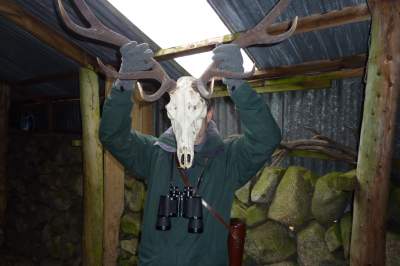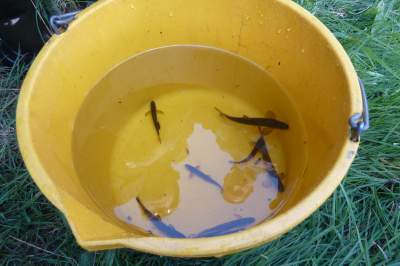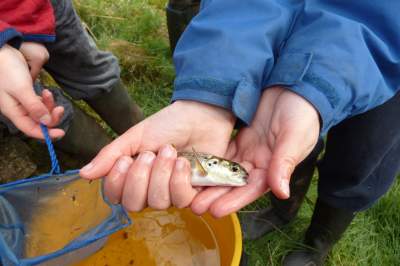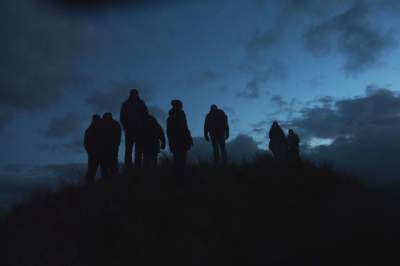
It was just beginning to get light. It had taken an hour to get here, but now that we had arrived, we turned the car headlights off and approached slowly, winding the windows down as we went. We were listening out for a very weird but very distinctive sound; a sort of bubbling noise with hissy-croaky bits (to hear it for yourself, click here).
We had a couple of false alarms, spotting what turned out to be a dark clump of rushes through our binoculars. Then, finally, we saw the source of all the noise. A male black grouse, looking particularly dashing in the early morning light, with his bright white tail feathers on display and stylish red wattles above his eyes.
This was my first ever sighting of a black grouse, and as we watched we saw eight males in amongst all the rushes. While it’s mainly all talk, every now and again a pair squared up to each other and had a short mock fight. We saw the odd feather fly, but really they’re a bit like the knights of old, puffed up with bravado but not really landing any blows. It was enchanting!
This particular morning I was out with colleagues from the RSPB, who are finding out where black grouse leks still exist in D&G. Amazingly, it’s possible to watch this particular lek from the road; there’s minimal disturbance to the grouse as long as you remain in the car. Surveying the surrounding hills for lek sites requires a bit more effort, ie. a lot of very early morning hikes, but it will be worth it to discover how these brilliant birds are doing.
Apart from bird-watching, I’ve been doing a fair few things since my last update. I’ve continued with my project for the RSPB, looking at the impact of the Galloway Kite Trail on the local economy. The visitor questionnaires have revealed that between 2004 and 2011, the Galloway Kite Trail has been a factor in attracting at least 16,500 visitors to Dumfries & Galloway, bringing £4 million of new spend. Studies like this provide invaluable evidence of the financial benefits of wildlife and conservation work, which is vital at a time when the state of the economy may push environmental issues off the agenda.
As the red kite breeding season advances, the Red Kite Officer set me the challenge of identifying a pair at a new nest site he’d discovered. I spent a couple of hours staring down a telescope going cross-eyed, but I eventually managed to read the wing tags of both birds. One is a local bird, but the other has come from Aberdeen! Tagging the birds helps dedicated people like the Red Kite Officer to see exactly what’s happening in the population, and it’s always exciting to see where the birds get to.
At the end of March I said a temporary goodbye to the RSPB and set about attending events at the Dumfries & Galloway Wildlife Festival. It was a busy couple of weeks! I saw my first adder, watched a demonstration of electrofishing, saw red deer up close, watched thousands of barnacle geese head for their roost on the Solway, came within a few feet of badgers and a fox, and pond-dipped in the pouring rain. Taking pictures of people looking warm and dry was a bit of a challenge…
One thing that quickly became obvious as I spoke to people at events is that the majority of visitors have been to D&G before; the number of first-time visitors is pretty small. This is something the tourist board hopes to address, as the region’s wildlife rivals that of more popular Scottish tourist destinations. For example, a new website called Wild Seasons is being developed to make it easier for people to see what D&G has to offer.
Now that the Wildlife Festival is over for another year, I’m starting to organise a few wildlife events of my own, including a beach art competition during World Oceans Week, a red squirrel celebration event and building a bug hotel on a village green. It should be an interesting couple of months!



